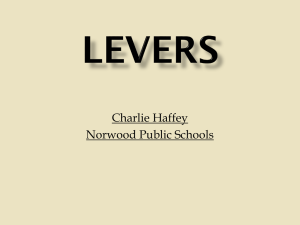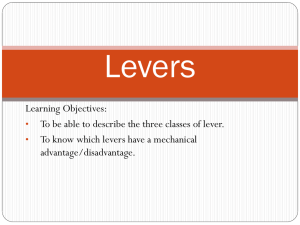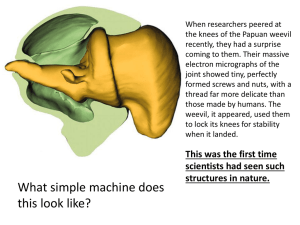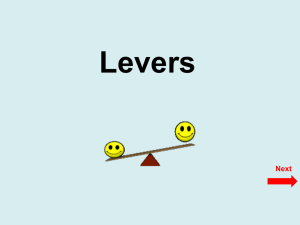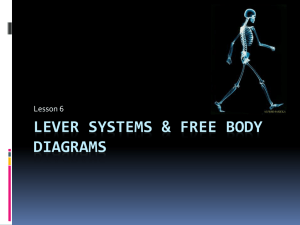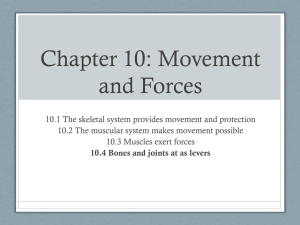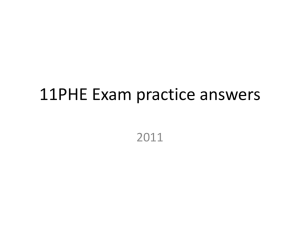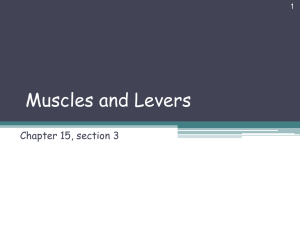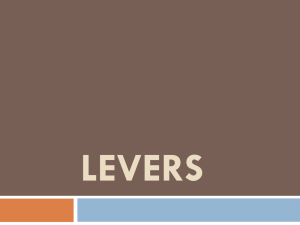The discovery of lever
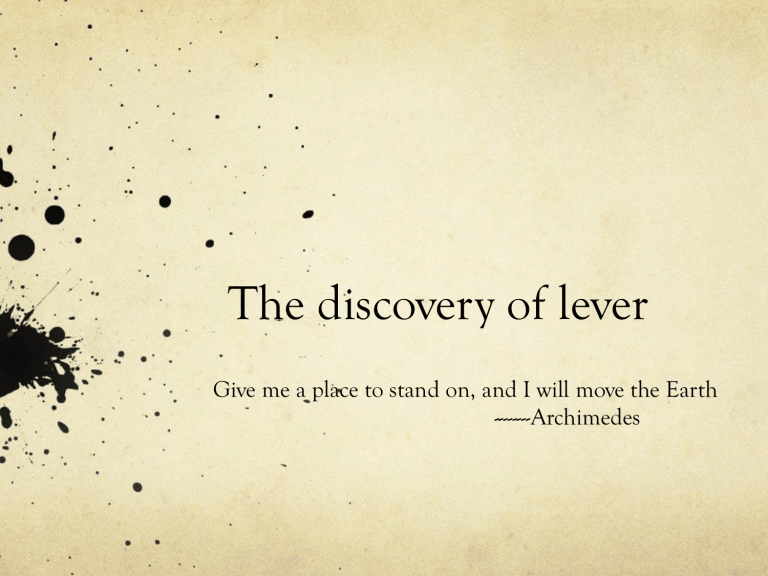
The discovery of lever
Give me a place to stand on, and I will move the Earth
--------Archimedes
How did the ancestors lift weight?
An advanced example: Stonehenge
Physicists and archeologists have given evidence to show that
Stonehenge may be established by using ball – bearing system, which consists of long boards with a groove and balls.
On such balls, the heavy can be moved to 10 kilometers far away per day.
If the systems were built on a slope, huge objects can be transported to a high place.
Using such sophisticated engineering, large labors and capitals must be involved into the construction of the tools.
What about using a simple machine to uplift something directly?
Lever and Achimedes
Achimedes, a universal genius, specializing in physics and mathematics, who discovered Archimedes' Principle, which states that a body immersed in a fluid experiences a buoyant force equal to the weight of the fluid it displaces; who found that a sphere has 2/3 the volume and surface area of its circumscribing cylinder.
To us physics beginners, the most famous remark from
Archimedes might probably be:
Give me a place to stand on , and I will move the Earth.
Lever and Achimedes
Lever is not his innovation, while he discovered the laws of lever.
“Three elements in the lever, the fulcrum, that is the cord or centre, and the two weights, the one which causes the movement, and the one that is moved: the ratio of the weight moved to the weight moving it is the inverse ratio of the distances from the centre.
Now the greater the distance from the fulcrum, the more easily it will move.”
The above passage is from the Mechanica, written by
Aristotle.
We hold that, Archimedes prompted the law with
Principles of Moments:
The sum of torques due to several forces applied to a single point is equal to the torque due to the sum
(resultant) of the forces. Mathematically, this follows from:
(r*F1)+(r*F2)+…=r*(f1+f2+…)
The principle of lever
Class 1: The fulcrum is located between the applied force and the load
Class 2: The load is situated between the fulcrum and the force
Class 3: The force is applied between the fulcrum and the load
The principle of lever
Formula: F1*L1=F2*L2
F1: The applied force
F2: The force given by the load
L1: The distance between the point of applied force and fulcrum(effort arm).
L2: The distance between the load and fulcrum(the resistance arm).
Many other common tools, instruments, and appliances are applications of the principle of the lever.
In a first-class lever, the effort may be either larger or smaller than the resistance, or equal to the resistance, depending upon the location of the fulcrum.
In a second-class lever, the effort arm is always longer than the resistance arm, so that a smaller effort moves a larger resistance, while in a third-class lever the reverse is always true, with the effort greater than the resistance.
The human forearm is an application of the third-class lever, the elbow acting as the fulcrum, the weight held in the hand and being lifted as the resistance, and the pull of the muscles between the elbow and the hand as the effort.
The principle of lever
F1*L1=F2*L2
If L1>L2, we can exert smaller force to overcome a larger one.
Class 1 and Class 2 levers
F1
L1
L2
F2
Applications
• In the use of a small force to overcome a large one the lever finds its many common applications.
• The lever is used for prying, as in the case of the crowbar, or for lifting.
• For example, the fulcrum is the point upon which a crowbar rests when used to lift or to pry loose some object; the effort is applied at the end farther from the fulcrum and is relatively small.
L2
L1
F1
F2
Application1: Bumper jack!
Application2: a pair of pliers
The principle of lever
If L1=L2, then F1=F2. That means we can lift a load by a force equal to the force given by the load.
Although we can not save the force, we can change the direction by using Fixed Pulley
Thus, we don’t need to climb the tree.
Applications
Application3: Balance
Application4: Seesaw
The principle of lever
Laborious lever: It has the effort between the load and the fulcrum. That is, the force is applied between the fulcrum and the load.
The length of the load arm goes all the way to the fulcrum and is always greater than the length of the effort arm.
L1<L2
F1>F2
F1
L1
L2
F2
Applications
Since the distance between the resistance and the fulcrum is usually greater than the distance between the effort and fulcrum, the effort is greater than the load, but such levers provide a good range of movement at speed.
The laborious lever can truly help to save more time and the effort can move a shorter distance , which make our lives more convenient.
Applications
Application 5: Tweezers
Application 6: Fishing rod
http://www.infoplease.com/ce6/sci/A0859255.html
